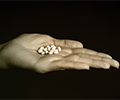Tag Archives: pioglitazone

July 2017 Br J Cardiol 2017;24:113–16 doi:http://doi.org/10.5837/bjc.2017.018 Online First
Glitazones (thiazolidinediones)
Emma Johns, Gerry McKay, Miles Fisher
| Full text
February 2011 Br J Cardiol 2011;18:24-7
Drugs for diabetes: part 3 thiazolidinediones
David McGrane, Miles Fisher, Gerard A McKay
| Full textMarch 2008 Br J Cardiol 2008;15:65-6
Rosiglitazone and pioglitazone – where do we go from here?
Sarah Jarvis
| Full textNovember 2006 Br J Cardiol 2006;13:386-90
News from the Scientific Sessions 2006 of the American Heart Association
BJCardio editorial team
| Full text


